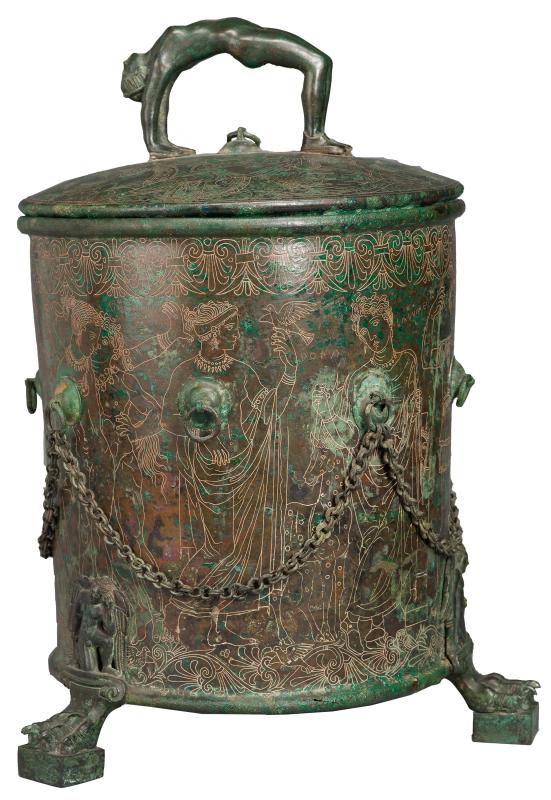
AZ046a - box; AZ046b - lid.
This piece was discovered in the excavation of Palestrina (the ancient Praeneste), near Rome, in 1864. The cista probably dates to Hellenistic period of Etruscan art, between the fourth and first centuries B.C.
The decorative engravings represent figures from ancient Greek mythology, accompanied by inscribed names in the archaic Greek and Latin of the time.
3-foot Etruscan cista with cover. The feet are in the form of a bird's paw. The handle of the cover is in the form of a female acrobat. Tiny ring on top of lid. The box has a chain looped around it. The decorative engravings on the cista represent figures, some of which are identified by engraved names suggesting a connection with the events of the Trojan War.
